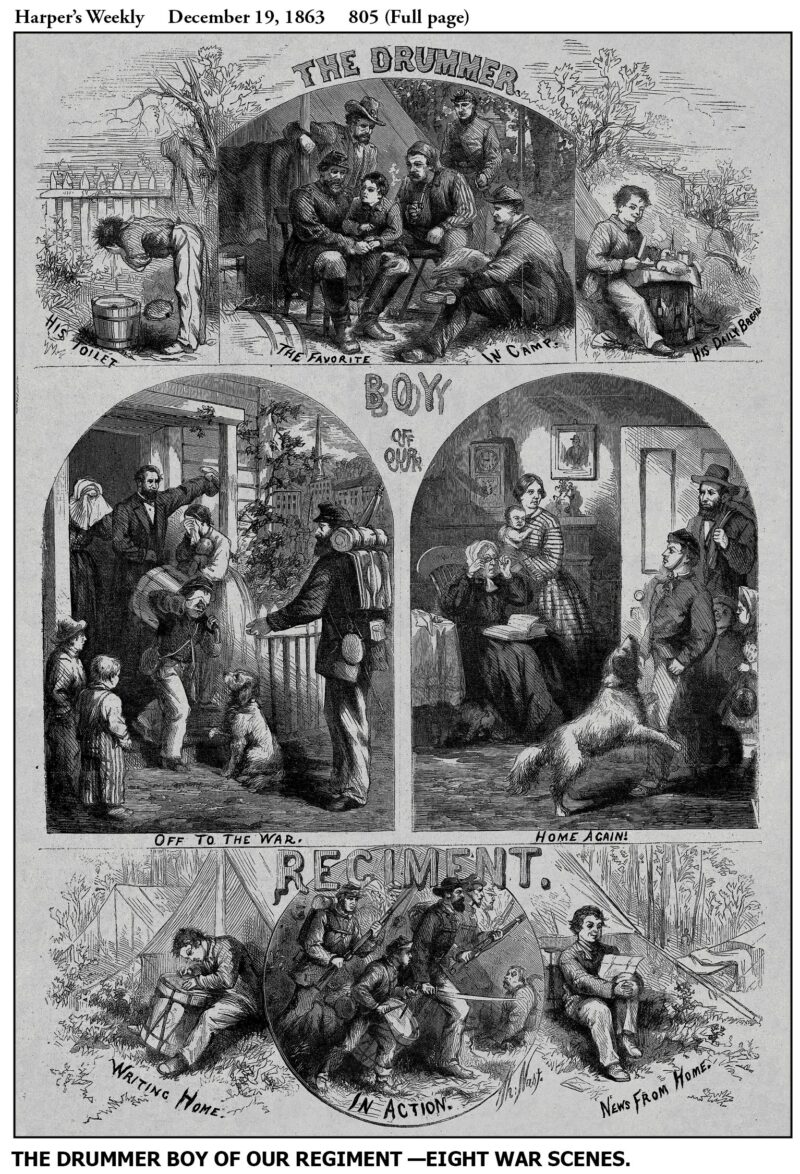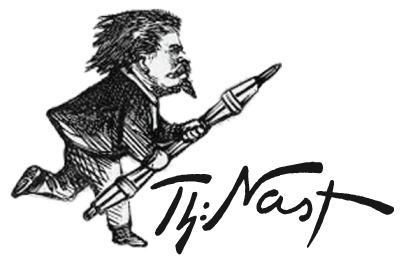
Harper’s Weekly – December 19, 1863
Perhaps the most famous drummer boy was Johnny Clem, who was allowed to join a Michigan Volunteer regiment in April 1861 as a nine-year old. In September 1863, he escaped capture at Chicamauga by shooting a Confederate officer; a month later he was seized, but released shortly afterwards. The attendant publicity in Union newspapers may have inspired Nast’s Christmastime tableaux.
The artist depicted the non-military aspects of a Union drummer boy’s life as he changed from a crying child on departure to a confident young man upon return. Nast stressed the positives: washing, eating, corresponding, and reassuring readers of camaraderie and protection by a group of caring soldiers. However, the bottom scene is questionable; in the unlikely event that a drummer boy was on the battlefield during action, he probably would have been helping with the wounded or running errands, not marching with the troops except possibly at the commencement of a battle before the fighting began.
Clem was discharged a year later at age 13, made the army his career as an adult, and retired in 1915 as Major General John Lincoln Clem.
